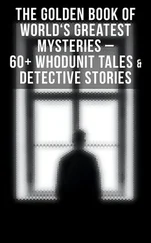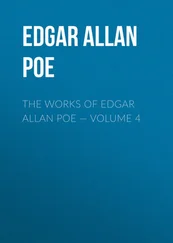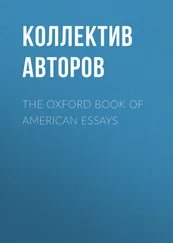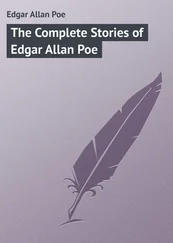Meanwhile, on the novel scene, until the end of the 1930's the best-selling American author of detective fiction was S. S. Van Dine, whose super-sleuth Philo Vance is among the most thoroughgoing snobs ever to appear in fiction. Van Dine's intricate plots follow the rules of Knox's 'Decalogue' and are played out in aristocratic settings into which the reality of corrupt cops, soup lines, and American hard times never intrudes. The purpose is the puzzle. Even today, literally millions of American readers buy detective fiction principally for the classical game.
In one way or another, the puzzle remains essential to the form, as demonstrated in the variety of mutations the detective story has been generating through the twentieth century. To consider the variations, one must start at the base, with «The Murders in the Rue Morgue.» In this story, Poe gives us the model for the classic detective tale, which is still alive and thriving in various modifications. Chevalier Auguste Dupin, his sleuth, not only is, in my opinion, the first detective of detective fiction, but is white, male, of an 'excellent-indeed illustrious family,' financially independent, and an amateur. The police are inept. The crime was the model for thousands of locked-room murders, done in a setting from which it seems impossible for the killer to escape, and the solution is based on close observation of physical evidence to which the superior 'ratiocination' of Dupin is applied. And, true to Poe's disdain for the notion of democracy and the uncouth labouring class, the principal characters (except the killer) are well-bred folks. In «The Purloined Letter, «Poe produced an even purer model, moving crime into the marble halls of the aristocracy.
A century later, with the traditional form enjoying its golden age, many writers still followed Poe's pattern. Locked-room crimes continued to flourish; the murder was done in a world of manor houses, formal gardens, faithful butlers, haughty house guests, and stupid police. The blood on the Persian carpet was usually blue, and everything was divorced from reality. Into this quiet haven, the skilful writer allowed no realism to intrude. It would distract the reader from the intricate puzzle the writer was unfolding.
Properly done, such stories are perfect escape literature. Book dealers labelled them 'cozies,' and Julian Symons, British crime writer and long-time literary critic for the «Times of London,» called them 'humdrums.' Fans bought them by the millions, and still do.
In his introduction to «A Catalog of Crime,» Barzun explained what the detective story should give those readers and what it should avoid. First, he stressed that the detective story is a tale, not a novel. "The tale does not pretend to social significance nor does it probe the depth of the soul," he wrote. "The characters it presents are not persons but types, as in the Gospels: the servant, the rich man, the camel driver (now a chauffeur)." Properly done, detective fiction is a high-brow form, according to Barzun. It is escape literature for the intellectual. It should deal with the workings of human reason, not with human emotion. "To put our creed positively," said Barzun (speaking for co-author Wendell Hertig Taylor as well), "we hold with the best philosophers that a detective story should be mainly occupied with detection, and not (say) with the forgivable nervousness of a man planning to murder his wife."
That great essay was published in 1971. But three years earlier, Raymond Chandler's «The Simple Art of Murder» had been republished, including the famous introductory essay, which served as a sort of writer's declaration of independence from the strictures of the classic form. I suspect that Barzun's essay was intended, at least in part, as a counterattack against the case that Chandler made for the detective story as novel and for the myriad modifications the genre had been undergoing, particularly in America.
Fortunately for me, and for hundreds of other mystery writers attracted into the genre for the other creative possibilities it offers, an increasing number of readers came to care less about whodunit and more about character development, social problems, settings, mood, culture, and all those aspects that involve emotion and not just the intellect. With the so-called mainstream of American literature polluted by the notions of the minimalists, and literary criticism entangled in the various fads of the mid-century, writers who thought they had something to say or a story to tell discovered detective fiction as Hammett and Chandler had been writing it. The mainstream novel, lying moribund under mid-century faddism, was being crowded off the best-seller lists by crime novels and mysteries.
Many of detective fiction's new practitioners leaped into the game, as did I, happily ignorant of Knox's 'Ten Commandments' or the genre's purpose as escapism for the intellectual. Instead of turning on whodunit, the focus shifted elsewhere. Sometimes, as in Ed McBain's story «Small Homicide,» the writers were chiefly interested in why the crime had been committed, or perhaps they merely used the sleuthing to draw the reader into a world they wanted to explore.
As the stories in this volume illustrate, Americans who wrote in the detective form had been branching out in all directions. The tale had been moved out of the isolation of the privileged class and into work-a-day America, and was often drawn with an excellent eye for regional settings and a keen ear for local voices. A bit of social purpose and realism had seeped in. In the United States, the sleuthing game had never been the exclusive domain of well-bred male amateurs; more and more of the popular writers-and their sleuths-were women. An early female detective found in these pages is Violet Strange, in Anna Katharine Green's «Missing: Page Thirteen.» But until the work of Hammett in the 1930's and Raymond Chandler in the 1940's began to have its effect, the puzzle generally remained at the heart of the work. Certainly in the minds of the publishing fraternity, that was what the public wanted. But even Chandler encountered editing that sought to trim his appeal to readers' emotions. In a letter to a friend written in 1947, Chandler noted that when he was writing short stories for the pulp-magazine market, editors cut out the language he used to establish mood and emotion on the grounds that their readers wanted action, not description: "My theory was that the readers just thought they cared about nothing but the action, that really, although they didn't know it, the thing they cared about, was the creation of emotion through dialogue and description." As our selection «I'll Be Waiting» shows, Chandler was not interested in producing the classic form as outlined by Knox's rules. He was interested in using crime as the centre around which he could spin a novel that illuminates social decadence and the human condition.
In this volume, Rosemary Herbert and I have assembled thirty-three stories that represent the evolution of the American detective story. Because the wealth of talent over the past century and a half was so great, we found ourselves in a position reminiscent of that of professional football coaches facing the deadline for cutting their teams down to the legal limit with too many outstanding players to chose among. Just as coaches sometimes keep a player because he can serve in more than one position, we chose our stories to illustrate more than one development in the field. Rex Stout's «Christmas Party,» for example, shows Nero Wolfe unusually active for an 'armchair detective'-but it beautifully illuminates how the 'Holmes and Watson' relationship had been modified. In making another selection, we evaluated several journalist sleuths, including George Harmon Coxe's photojournalist Flashgun Casey, but we picked Joe 'Daffy' Dill for this volume because we found Richard Sale's story «A Nose for News «irresistibly entertaining.
Читать дальше




